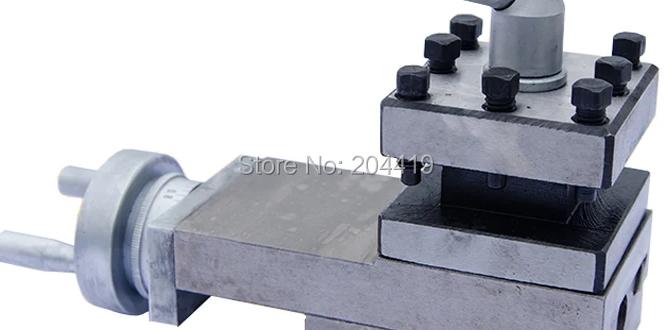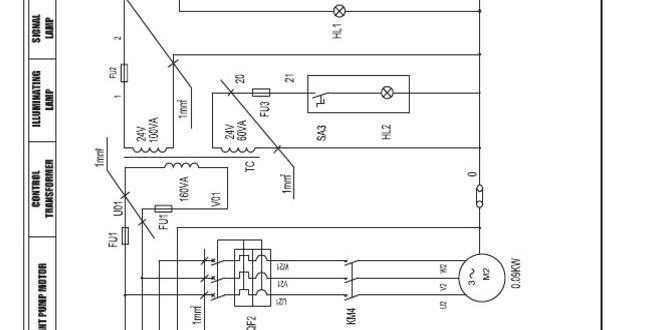The TiAlN ball nose end mill with a 40-degree helix angle is a powerful and versatile tool, especially effective for roughing applications on hardened steel up to HRC60. It offers efficient material removal and good surface finish, making it a go-to choice for many machining tasks.
Hey there, fellow makers! Daniel Bates here from Lathe Hub. Ever stare at a block of tough material and wonder which tool will make quick work of it, especially when you’re just starting out? It can feel like a puzzle. That’s where the TiAlN ball nose end mill with a 40-degree helix angle shines. It’s a real workhorse, designed to take on challenging roughing jobs with confidence. We’re going to break down exactly why this tool is so great for beginners and how you can use it effectively to get your projects moving. Let’s dive in and make machining less intimidating, one tool at a time!
This guide will walk you through everything you need to know about this essential roughing tool, from its unique features to practical tips for getting the best results. We’ll cover its benefits for roughing, how the TiAlN coating helps, and why the 40-degree helix angle is key. You’ll learn how to select the right size, understand its applications, and get some handy tips for safe and efficient use. By the end, you’ll feel ready to tackle those roughing jobs with your TiAlN ball nose end mill!
Why the TiAlN Ball Nose End Mill 40 Degree is Your Roughing Best Friend
When you’re new to machining, choosing the right tool can feel a bit overwhelming. You want something that’s forgiving, effective, and makes the job easier. The TiAlN ball nose end mill with a 40-degree helix angle is just that kind of tool, especially for roughing operations. Let’s break down what makes it so special.
Roughing is the first step in shaping a piece of material. Its goal is to remove a lot of material quickly and efficiently, getting the part close to its final shape. It’s not about precision finishing; it’s about making progress. This is where our featured end mill truly excels.
Understanding the Key Features
To really appreciate why this end mill is so good for roughing, let’s look at its components:
- Ball Nose: This means the tip of the end mill is rounded, like a ball. This shape is incredibly versatile. It can mill flat surfaces, create rounded internal corners without leaving a sharp profile, and is excellent for contouring and 3D cutting. For roughing, the rounded shape helps to distribute cutting forces more evenly, reducing chatter and the risk of chipping.
- TiAlN Coating: TiAlN stands for Titanium Aluminum Nitride. This is a specialized coating applied to the cutting tool. Think of it as a super-hard armor for your end mill. This coating offers several significant benefits:
- Increased Hardness: It makes the tool itself much harder, allowing it to cut through tougher materials.
- High-Temperature Resistance: Machining generates a lot of heat. TiAlN can withstand much higher temperatures than uncoated tools, which means less heat transfer into the workpiece and the cutting tool. This prolongs tool life and allows for faster cutting speeds.
- Reduced Friction: The coating helps chips slide away more easily, reducing friction and the buildup of heat and wear. This is crucial for smooth cutting and preventing your tool from getting gummed up.
- Excellent for Hardened Materials: This coating is specifically designed for machining materials that are already hardened, like tool steels or pre-hardened mold steels, often up to HRC60. This is a big deal when you’re working with difficult materials.
- 40-Degree Helix Angle: The helix angle is the angle of the cutting flutes as they spiral around the tool. A 40-degree helix angle is often considered a “sweet spot” for general-purpose milling, offering a good balance between aggressive material removal and a smooth cutting action.
- Improved Chip Evacuation: A steeper helix angle (like 30-45 degrees) generally allows for better chip evacuation, especially in slots or pockets. This prevents chips from recutting, which can damage the tool and the workpiece.
- Reduced Cutting Forces: The moderate angle helps to reduce the axial and radial forces on the tool. This means less stress on your machine spindle and the end mill itself, leading to a more stable cut and less vibration.
- Good for a Variety of Materials: While steeper helix angles (like 45 degrees and up) are often associated with slotting and aggressive roughing, and shallower angles (around 30 degrees) are good for finishing, the 40-degree angle provides a solid compromise. It’s effective for roughing without being overly aggressive or prone to chatter.
Together, these features make the TiAlN ball nose end mill with a 40-degree helix angle an incredibly effective tool for roughing, particularly when dealing with hardened steels. It’s designed to remove material efficiently while maintaining tool life and the integrity of your workpiece.
When to Reach for Your TiAlN Ball Nose End Mill 40 Degree
As a beginner, knowing when to use a specific tool is just as important as knowing how. The TiAlN ball nose end mill with a 40-degree helix angle is your go-to for several key roughing scenarios, particularly when you’re working with challenging materials.
This tool truly shines when you need to remove a significant amount of material quickly and efficiently. It’s not the tool for intricate finishing details, but it’s perfect for the initial shaping stages.
Ideal Applications for Roughing
Here are the situations where this end mill will prove invaluable:
- Roughing Hardened Steels (HRC60 and below): This is its forte. If you’re working with tool steels, die steels, or other materials that have been heat-treated to a hardness of up to HRC60, this end mill, with its TiAlN coating, is an excellent choice. The coating provides the necessary hardness and heat resistance to cut these tough materials without rapid tool wear.
- 3D Contour Milling: The ball nose shape is perfect for creating curved surfaces, freeform shapes, and complex contours. In roughing, this means you can quickly remove large amounts of material to get close to your final contoured shape.
- Slotting and Pocketing (with care): While not its absolute primary function, the 40-degree helix allows for decent performance in creating slots and pockets. The rounded tip means you won’t have a sharp internal corner, which is often desired in roughing to avoid stress risers. Just ensure your chip evacuation is good.
- Preparing Surfaces for Finishing: Roughing is the preparatory step. This end mill will efficiently remove bulk material, leaving a surface that is ready for a finishing pass with a finer tool. This speeds up your overall machining time significantly.
- Mold and Die Machining: In the mold and die industry, hardened steels are commonplace. This end mill is ideal for the initial roughing stages of creating complex molds and dies, efficiently carving out the basic shape.
- Rapid Material Removal: When your goal is simply to remove large quantities of material quickly to get to a workable shape, this end mill will deliver. Its design prioritizes material removal rate.
Think of it as your heavy lifter. It’s designed to do the tough initial work, making the subsequent steps much more manageable and efficient. For beginners, this means less frustration with slow progress or tool breakage when tackling harder materials.
Benefits of Using a 40-Degree Helix Angle for Roughing
The 40-degree helix angle isn’t just a random number; it’s a design choice that offers specific advantages for roughing:
- Balanced Cutting Action: It provides a good balance between the aggressiveness needed for material removal and the smoothness required to avoid excessive vibration or chatter. This is crucial for stability, especially on less rigid setups common in beginner workshops.
- Effective Chip Management: This angle is generally good at lifting and expelling chips. Good chip evacuation is vital in roughing to prevent heat buildup and tool breakage. For more on chip evacuation and its importance, check out resources from the National Institute of Standards and Technology (NIST), which delve into the physics of chip formation.
- Tool Life: Compared to very steep helix angles (which can be more aggressive but prone to chatter), the 40-degree angle often contributes to longer tool life by reducing shock loads on the cutting edges.
- Versatility: It performs well across a range of materials and cutting conditions, making it a reliable choice when you’re still learning the nuances of different machining parameters.
When you combine these benefits with the ball nose geometry and the TiAlN coating, you get a tool that’s not only capable but also relatively forgiving, making it an excellent choice for those new to machining hardened materials.
Choosing the Right TiAlN Ball Nose End Mill 40 Degree
Once you understand why this tool is great, the next step is choosing the right one for your specific needs. There are a few key factors that will influence your decision.
Don’t get bogged down by too many options. For basic roughing on common projects, a few key specifications will guide you. We’ll keep it simple so you can confidently pick the right tool for your workshop.
Key Specifications to Consider
When you’re looking at these end mills, keep an eye out for these important details:
- Diameter: This is the most obvious spec. End mills come in a wide range of diameters, from tiny fractions of an inch to several inches.
- For Roughing: Generally, you’ll want a larger diameter end mill for roughing because it removes more material per pass. A 1/2 inch or 3/4 inch diameter might be a good starting point for many projects.
- For detail or smaller machines: Smaller diameters (e.g., 1/4 inch, 3/8 inch) are good for smaller parts or when working with machines that have less power or rigidity.
- Number of Flutes: This refers to how many cutting edges (flutes) are on the end mill. Common counts are 2, 3, or 4 flutes.
- 2 Flutes: Excellent for slotting and often preferred for softer materials like aluminum because they offer better chip clearance.
- 3 Flutes: A good all-around choice, offering a balance between material removal and surface finish. They can handle steels well.
- 4 Flutes: Better for harder materials and can provide a smoother surface finish due to more cutting edges engaging the material. They are often recommended for steels up to HRC 50-60. For your TiAlN 40-degree roughing tool targeting HRC60, a 4-flute design is often a strong contender.
- Reach/Length: This is the length of the cutting flutes on the tool, or the overall length of the shank.
- Standard length tools are good for general-purpose work.
- Longer reach tools (extended length) are necessary when you need to reach deep into pockets or machine features far from the spindle. However, longer tools are less rigid and more prone to vibration, so they are generally not ideal for heavy roughing unless absolutely necessary.
- Shank Type: Most end mills have a cylindrical shank. The standard is a plain cylindrical shank, but some may have a Weldon flat ground onto the side. This flat helps set screws in tool holders grip more securely, preventing the tool from being pulled out under heavy cutting loads.
- Material Holding: How will you hold the end mill in your machine? Most common milling machines use tool holders that grip the shank. Ensure the shank diameter of your end mill matches your tool holder system (e.g., R8, CAT, HSK, or collets).
Material Considerations: What is HRC60?
The mention of “HRC60” is critical. HRC stands for Rockwell Hardness C scale. This is a common scale used to measure the hardness of metals. A rating of HRC60 indicates a very hard material. Many standard end mills would struggle or break when trying to machine materials this hard. The TiAlN coating on your ball nose end mill is specifically designed to handle this level of hardness, along with high temperatures generated during cutting.
For more in-depth information on material hardness scales and their implications in machining, you can consult resources from organizations like the ASTM International, which sets standards for material testing.
Putting It All Together: Selecting Your Tool
For a beginner targeting roughing applications on materials up to HRC60:
- Look for a TiAlN coated, 4-flute ball nose end mill.
- Consider a diameter that suits your machine’s capability and the size of your parts. Often, 1/2 inch (12mm) or 5/8 inch (16mm) are good starting points.
- Standard length is usually sufficient unless you have a specific depth requirement.
- Ensure the shank diameter is compatible with your machine’s tooling.
By focusing on these key aspects, you can confidently select a TiAlN ball nose end mill that will serve you well in your roughing tasks.
How to Use Your TiAlN Ball Nose End Mill 40 Degree for Roughing
Now that you’ve chosen the right tool, let’s talk about how to use it effectively and safely for roughing. Machining involves specific parameters, and understanding them will make a big difference in your results.
Getting started with a new tool can feel a bit daunting, but we’ll break it down into simple steps. This section is all about practical application so you can confidently put your end mill to work.
Setting Up Your Machine and Tool
Before you hit the “on” button:
- Secure the Workpiece: Ensure your material is firmly clamped in a vise, on a fixture, or directly to the machine table. Any movement here is dangerous and will ruin your cut.
- Install the End Mill: Insert the end mill into a rigid tool holder (like a collet chuck or a milling chuck). Tighten it securely. For heavy roughing, using a tool holder with a Weldon flat (if your end mill has one) is recommended.
- Set Your Zero Point: Use your machine’s methods (edge finder, probe, or manual dial-in) to establish your workpiece zero point (X, Y, and Z). For the Z-axis, it’s typically set to the top surface of your workpiece.
- Check Tool Clearance: Ensure the end mill can move freely without crashing into clamps, fixtures, or other parts of your setup.
Understanding Cutting Parameters (Feeds and Speeds)
This is where many beginners find themselves scratching their heads. Feeds and speeds might sound complex, but they are essential for successful machining.
- Spindle Speed (RPM): This is how fast the end mill rotates. It’s measured in revolutions per minute (RPM). Higher speeds generally mean faster cutting but also more heat.
- Feed Rate: This is how fast the tool moves through the material, measured in inches per minute (IPM) or millimeters per minute (MM/MIN). A faster feed rate removes material more quickly but puts more load on the tool.
- Depth of Cut (DOC): How deep of a chip you’re taking. For roughing, you can often take a larger DOC.
- Width of Cut (WOC): How wide the cutting flute engages the material. This is particularly relevant when milling slots or shoulders.
How to Determine Feeds and Speeds:
- Manufacturer’s Recommendations: The best place to start is by looking for feed and speed charts provided by the manufacturer of your end mill. These charts often list speeds and feeds based on material type, tool diameter, and material hardness.
- Machining Calculators: Many online calculators and apps can help you estimate starting feeds and speeds. Search for “machining feed and speed calculator.” These take into account tool diameter, number of flutes, material, coating, and machine type.
- Rule of Thumb (Use with caution): For general-purpose steels with a TiAlN coated carbide end mill, you might start with surface speeds (SFM) in the range of 200-400 SFM. You can convert this to RPM using the formula:RPM = (SFM * 12) / πD
Where:
- SFM = Surface Feet per Minute
- D = Tool Diameter in inches
For feed rates







